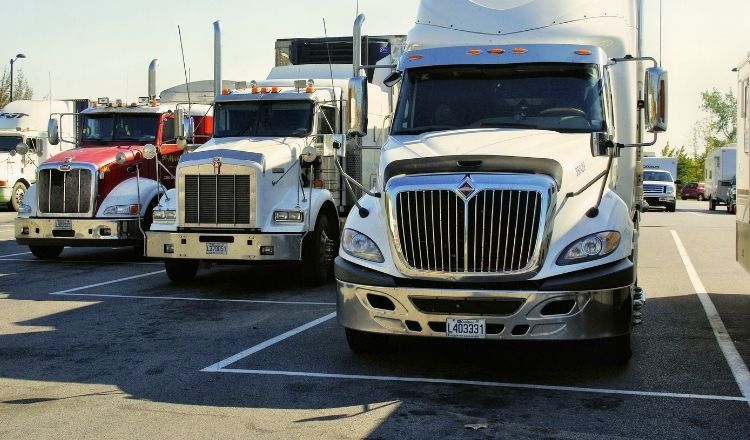Introduction to Cabin Air Suspension
Cabin air suspension is an advanced technology used in modern vehicles to provide a smooth and comfortable ride. Unlike traditional suspension systems that rely on springs or shock absorbers, cabin air suspension uses air springs to cushion the vehicle and adjust the ride height automatically. This system plays a crucial role in enhancing ride quality by adapting to different road conditions and vehicle loads.
The primary function of cabin air suspension is to maintain a consistent level of the vehicle’s cabin, regardless of external factors like load changes or uneven road surfaces. This results in better stability, reduced vibrations, and increased comfort for both drivers and passengers.
Additionally, cabin air suspension helps in improving handling and reducing body roll during sharp turns or while navigating hilly terrain. By optimizing the vehicle’s suspension system, it ensures a smoother, quieter, and more enjoyable driving experience.
As more vehicles, especially luxury models, adopt this technology, the benefits of cabin air suspension are becoming increasingly evident, making it an essential feature for those seeking enhanced vehicle performance and comfort.
How Cabin Air Suspension Works
Cabin air suspension operates through a series of components that work together to provide a smooth, adaptable ride. At the heart of the system are air springs, which replace traditional metal coil springs. These air springs are inflated or deflated by a compressor to adjust the suspension height and stiffness, depending on the vehicle’s load and the road conditions.
The system also includes sensors that monitor the vehicle’s weight distribution and road surface. These sensors send real-time data to the vehicle’s control unit, which processes the information and adjusts the air pressure in the springs accordingly. This ensures that the ride height is maintained at an optimal level, regardless of whether the car is loaded with passengers or cargo.
The onboard compressor, typically powered by the vehicle’s electrical system, is responsible for inflating the air springs when needed. In some systems, the compressor works in tandem with a height adjustment valve to fine-tune the ride and provide the most comfortable driving experience possible.
By using air pressure, cabin air suspension systems offer a more precise and dynamic level of control compared to traditional suspension systems. This continuous adjustment improves ride quality, enhances vehicle stability, and makes driving more enjoyable, especially on rough or uneven terrain.
Benefits of Cabin Air Suspension
Cabin air suspension offers numerous benefits that improve both vehicle performance and driver comfort. One of the most significant advantages is the enhanced ride quality. Air suspension systems adapt to varying road conditions by adjusting the air pressure in the springs, ensuring a smooth and comfortable ride even on bumpy or uneven surfaces. This flexibility allows the vehicle to cushion vibrations and shocks, providing a much more pleasant experience compared to traditional suspension systems.
Another key benefit is the vehicle’s ability to level itself automatically, even when carrying uneven loads. This feature is particularly useful for trucks, RVs, and other vehicles that frequently carry heavy or uneven cargo. By maintaining an even ride height, cabin air suspension prevents excessive wear on tires and suspension components while ensuring stability.
Cabin air suspension also improves handling and cornering. By automatically adjusting the vehicle’s suspension based on road conditions, the system reduces body roll and maintains optimal tire contact with the road, resulting in better traction and control.
In addition, this system reduces the overall noise and vibration that passengers feel in the cabin. This means that even at higher speeds, the cabin remains quiet, further enhancing the driving experience. Whether for comfort, performance, or longevity, the benefits of cabin air suspension are clear and impactful for modern vehicles.
Cabin Air Suspension vs. Traditional Suspension
When comparing cabin air suspension to traditional suspension systems, several key differences become apparent, each influencing ride quality, handling, and vehicle performance.
Traditional suspension systems typically rely on coil springs, leaf springs, or torsion bars to absorb shocks and maintain vehicle stability. While these systems are effective, they offer limited adjustability, meaning that they cannot adapt to varying road conditions or changing vehicle loads. This can result in a rougher ride, especially when driving on uneven or poorly maintained roads.
In contrast, cabin air suspension uses air springs that can be inflated or deflated to adjust the vehicle’s suspension stiffness and ride height. This flexibility allows the system to automatically compensate for varying load weights and road conditions, providing a much smoother and more comfortable ride. Air suspension also has the advantage of reducing vibrations and minimizing body roll, improving overall vehicle handling.
Another major difference is the level of customization air suspension offers. Many air suspension systems allow drivers to manually adjust ride height, which can be particularly useful for vehicles that need to navigate different terrains or for those looking to improve their vehicle’s stance for aesthetic reasons.
Ultimately, while traditional suspension systems are more affordable and simpler in design, cabin air suspension provides a higher level of comfort, handling, and adaptability, making it an ideal choice for luxury vehicles and those seeking an enhanced driving experience.
Common Issues with Cabin Air Suspension
While cabin air suspension systems offer many benefits, they are not without potential issues. Understanding these common problems can help vehicle owners take preventive measures or seek timely repairs.
One of the most frequent issues is air leaks. Over time, the air springs or air lines can develop small holes or cracks, leading to a gradual loss of air pressure. This can result in the vehicle sagging or not adjusting its height correctly. Regular inspection of the air springs and lines can help identify leaks early and prevent further damage.
Another common problem is compressor failure. The compressor is responsible for inflating the air springs, and when it malfunctions, the system may not be able to maintain the correct air pressure. This can cause the vehicle to sit too low or too high, affecting ride comfort and stability. Compressor issues often arise due to overuse or lack of maintenance, such as insufficient lubrication.
Faulty sensors can also disrupt the system’s ability to adjust properly. Sensors monitor the vehicle’s ride height and weight distribution, and when they fail, the system may not respond accurately to changes in load or terrain.
Routine maintenance, such as checking for leaks, cleaning sensors, and ensuring the compressor is in good working condition, is essential to keep the cabin air suspension system functioning properly. Regular maintenance can prevent these common issues from affecting performance and comfort.
Cabin Air Suspension in Luxury Vehicles
Cabin air suspension is commonly found in luxury vehicles, where comfort and performance are top priorities. Many high-end car brands, such as Mercedes-Benz, Audi, and BMW, have incorporated air suspension systems to offer a premium driving experience.
In luxury vehicles, cabin air suspension is designed to provide a smooth, quiet, and stable ride, even on rough or uneven surfaces. The system allows for automatic adjustment of the vehicle’s ride height based on load and road conditions, ensuring a consistent and comfortable ride for passengers. Additionally, the ability to adjust the vehicle’s height manually in some luxury models gives drivers greater control over the ride quality, particularly when navigating steep inclines or loading cargo.
The enhanced comfort offered by air suspension is particularly noticeable during long road trips or when driving over bumpy terrain. Luxury cars with air suspension systems are known for reducing vibrations and providing superior shock absorption, making the ride much quieter and smoother than vehicles with traditional suspension systems.
Beyond comfort, cabin air suspension contributes to the overall performance of luxury vehicles. By improving stability and handling, it enhances cornering and provides better traction, contributing to a safer and more enjoyable driving experience. For luxury vehicle owners, cabin air suspension is not only a functional upgrade but also an essential feature for elevating the driving experience.
Cost of Installing or Replacing Cabin Air Suspension
The cost of installing or replacing a cabin air suspension system can vary significantly depending on the vehicle make and model, as well as the extent of the repairs or upgrades needed. Generally, the price range for installation or replacement of a complete air suspension system can be anywhere from $1,000 to $5,000 or more.
The primary factors that influence cost include the brand of the vehicle, the complexity of the suspension system, and whether original equipment manufacturer (OEM) parts or aftermarket components are used. Luxury vehicles and high-end brands tend to have higher costs due to the specialized parts and technology used in their air suspension systems.
In addition to the installation or replacement costs, maintenance is another consideration. Over time, components such as air springs, compressors, and sensors may need to be replaced or serviced. The cost for individual part replacements can range from $200 to $1,000, depending on the part and the labor required for installation.
Although cabin air suspension systems may come with a higher upfront cost compared to traditional suspension systems, the long-term benefits—such as improved ride quality, handling, and reduced wear and tear on other vehicle components—often make it a worthwhile investment for many vehicle owners. Routine maintenance can also help extend the lifespan of the system and avoid costly repairs down the road.
Future of Cabin Air Suspension Technology
The future of cabin air suspension technology looks promising, with ongoing advancements aimed at improving performance, efficiency, and overall vehicle comfort. One key trend is the development of more energy-efficient systems. As manufacturers seek to reduce the environmental impact of vehicles, newer air suspension systems are being designed to consume less energy while maintaining the same level of performance. This includes advancements in compressor technology and air springs that require less power to operate, making them more efficient for both electric and hybrid vehicles.
Another exciting direction for cabin air suspension is increased automation. Future systems are expected to integrate more advanced sensors and control algorithms, enabling real-time adjustments that are even more precise. This could lead to a fully adaptive system that adjusts not only for road conditions but also for factors like weather or driving style, further enhancing the driving experience.
In addition, the integration of artificial intelligence (AI) and machine learning is on the horizon, allowing air suspension systems to learn from driving patterns and optimize settings over time. These innovations could lead to suspension systems that continuously adapt to deliver the perfect balance of comfort and performance for every individual driver.
As technology continues to evolve, cabin air suspension is set to become even more advanced, offering improved reliability, lower maintenance costs, and greater comfort—making it an essential feature in the vehicles of tomorrow.
For detailed information, you can contact us at torqueusa.com


